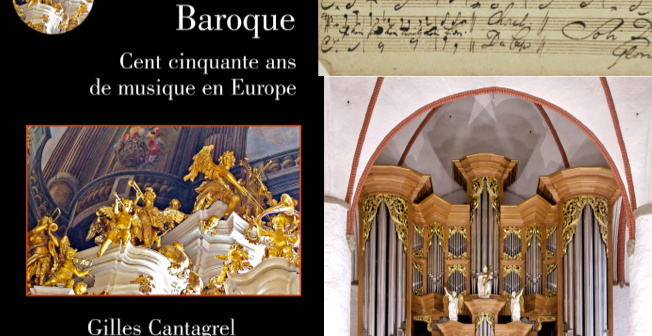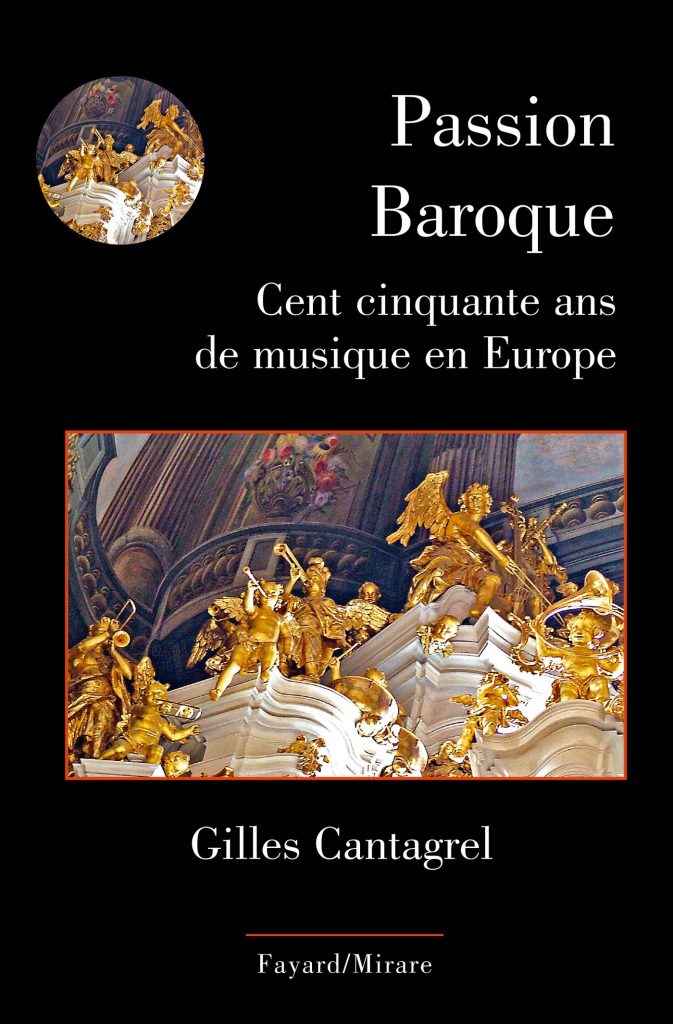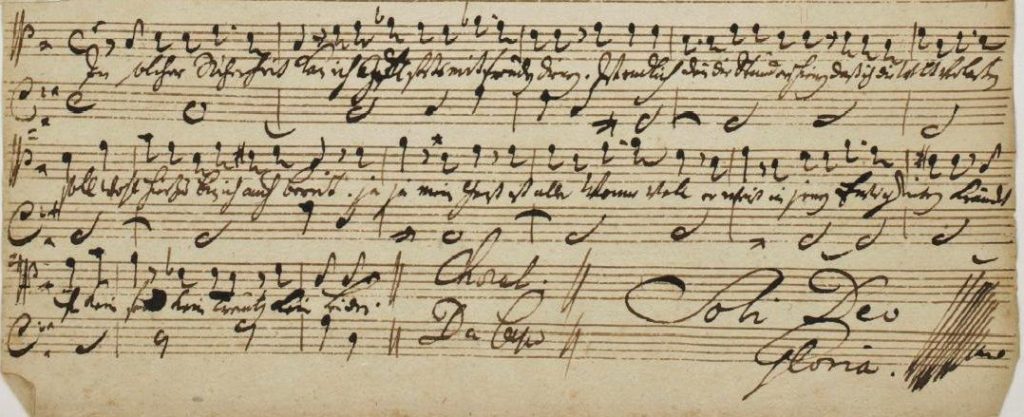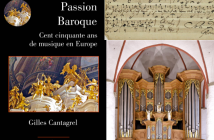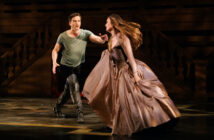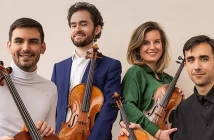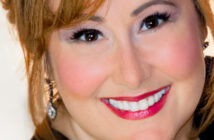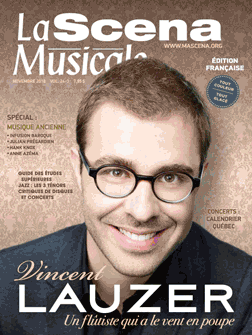
This page is also available in / Cette page est également disponible en:
![]() Francais (French)
Francais (French)
Following Heinrich Wölfflin of Switzerland, the Catalonian art critic Eugenio d’Ors situated the Baroque between the execution of Giordano Bruno in 1600 and the death of Johann Sebastian Bach in 1750. […] Since one of the general features of Baroque music is the use of basso continuo, it is natural to observe that the continuo appeared around 1600 only to disappear shortly after 1750. This century and a half is subdivided just as easily into three half-century periods – Early, Middle, and Late Baroque – a division that is much less arbitrary than it may seem at first glance.
Three Periods of Baroque
Since its origin, three main countries dominated the development of European Baroque: Italy, of course, the Germany of the Holy Roman Empire, and France. […] With Monteverdi and Cavalli in Italy and Schütz in Germany, new forms were being born because of one essential question: How can we move from the conciseness of a motet or a polyphonic song to a piece with wider dimensions?
The vocal domain answered with oratorio and opera; the instrumental domain, with the variation and the suite. Middle Baroque took place in the second half of the seventeenth century. […] Musicians of this time valued emotional expression, whether secular or spiritual. The forms themselves manifested as instrumental suites, choral preludes and variations, mass verses and hymns and, of course, the major genres of lyric theatre and tragedy and the opéra-ballet. […] By 1685, the geniuses of Late Baroque had entered the scene […], Vivaldi, Telemann, Rameau, Handel, Bach and Scarlatti. Genres and forms acquired their archetypal structures at this time: fugue, sonata and concerto, grosso or with a soloist. Within vocal music were the church or secular cantata, opera seria and opera buffa and, on the spiritual side, oratorio.
The music of this great era differs from those before and after in specific features such as the primacy of counterpoint in harmony all the way to the consecration of the triumphant key, the development of the language of the fugue with the apotheosis of the singular theme, the rhetorical thought that organizes musical discourse, and the standardization of the basso continuo that encapsulates and supports the harmony of the musical edifice.
Intoxication of Sounds
One single movement saw great advancements in instrument making and increasingly brilliant playing techniques, which resulted in new instruments. […] In Italy, particularly in Cremona, violin lutherie had its heyday between 1690 and 1720 with the Amati dynasty, the genius of Stradivari, and the Guarneri family… In Venice, Matteo Goffriller specialized in cellos.
Under Italy’s influence, the French school of lutherie developed in Mirecourt in the 17th century. […] Easily finding its place in homes, the harpsichord allowed a single musician to produce polyphony and provide harmonic support to voices and instruments. This is one of the reasons for its extraordinary proliferation across Europe during this period. […] Organ-building took major strides in France, the Netherlands and the Holy Roman Empire, which became major hubs of the craft. Of all the organ builders, the greatest master was undoubtedly Arp Schnitger, who was based in Hamburg and creator of close to 160 instruments of generally large dimensions.
A History of Temperament
Temperament, or rather temperaments, was an issue that pervaded the Baroque period. With the development of keyboard instruments […], it was quickly noted that tuning an instrument with fixed notes poses problems that cannot be solved without compromise. Indeed, one would tune all the fifths perfectly equally with the intention of falling exactly on the starting note in a scale. However, this wouldn’t be the case, as the scale would end on a note that is too high. […] In 1618, Michael Praetorius, performing the works of Zarlino, proposed a mean-tone temperament that keeps certain thirds equal but lowers the fifths, allowing one to play perfectly in tune, although only in a small number of keys. […] With his The Well-Tempered Clavier of 1722, Bach went much farther. […] Employing the “good” temperament that he had developed (not an equal temperament, as it is often interpreted today), Bach composed a prelude and fugue pair for each of the major and minor keys, articulating the affect of all keys, with their areas of shadow and light, better than words ever could.
Pain, Solitude and Laments
Beside the airs of pastoral poetry and joyous stanzas, the solitude and cries of lost love, be it through absence or death, formed the backdrop of the poetry and music of the century. Whether desired or endured, solitude was one of the major motifs of Early Baroque, in literature as well as music, and manifested most notably in the subtle art of the air de cour. […] The elegy, a sung poem expressing grievance, pain and, especially, death, became the genre known as the lamento, or lament, in 17th-century music. When voicing grief at the loss of someone dear, it was referred to as a tombeau. The first great lamento is undoubtedly the one featured in Monteverdi’s 1608 opera Arianna. […] Mournful music needs no words. Harpsichordists and lutenists cultivated the art of evoking affects, the “passions,” through strictly musical means: minor keys, a stylized knell, and slow tempos, generally in an allemande movement.
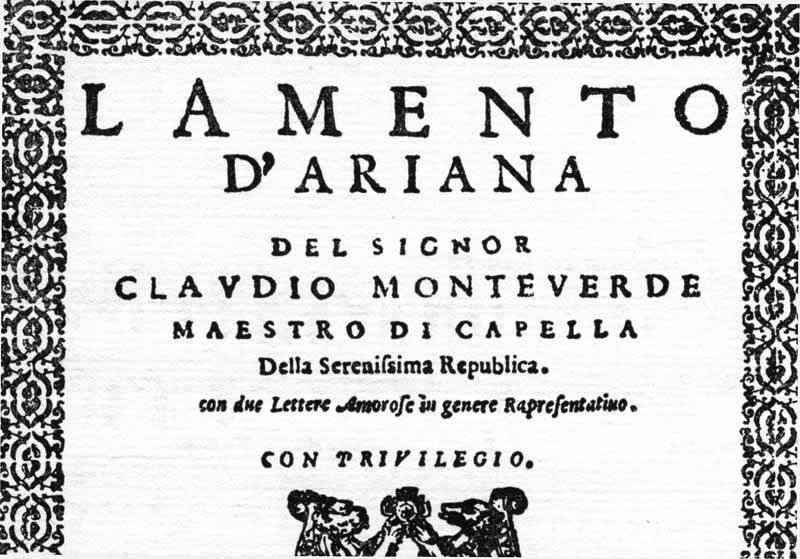
When Monteverdi decided to take the Lamento out of his opera Arianna to publish it separately, he saved this aria from being lost. It’s the only part of the opera that remains today. This cover is from the 1623 edition.
Action, Movement, Colour and Ornament
To move is to put in motion – beings and things. This voluntary movement manifests itelf as diversity, even as apparent disorder. In contrast, in any case. All of the Baroque’s intellectual and artistic trends were fuelled by this idea. Lyrical theatre was a favourite setting for manifestations of the soul, heart, and body. […] Very quickly, vocal as well as instrumental virtuosity would constitute an apotheosis of the corporal and musical movement, chiefly in the thrill of faster pieces. The contrasts seen in vocal music – between air and recitative, soloist and choir, homophony and polyphony – were direct reflections of this [philosophy]. And, above all, dance was the preferred expression of the animated motions of the human body. […] In the 17th-century tradition, performing violinists and singers improvised ornaments according to preference, personality and talent. But the grandest improvised follies of these coloraturas merely whirled atop simple patterns, just like the plethora of architectural decorations adorning the austerity of pillars and architraves. […] Baroque grew out of the ornament, at times amplifying the movements of the lines to excess. Ornamentation added to the illusion of movement, as did the decor of the opera and equipment. It was a tool for discourse.
The Birth of “Musical Discourse”
The Baroque age was a time of rhetoric. It was the turn of music to speak – in the first person. From this point on, we speak of “musical discourse.” Systematized since the 16th century, musical rhetoric developed with the new era initiated by Florentine opera, the Roman oratorio and the madrigal. […] Authors reproduced and commented on the great works of antiquity, especially those of Plato and Cicero, which were still considered references.
The art of composition and the art of oration were held in equal respect, so the very elements of the language of composition had to be codified and founded on rhetorical rules. Writings and essays quickly multiplied. Italian, German and French thinkers would advance the methods of musical notation, with the sole objective of awakening the passions of the soul through expression. All of Baroque Europe was ablaze.
Music, Order and Circularity
Symmetry and order are at the core of every musical arrangement. With the birth of larger forms, from the oratorio to the concerto, Baroque musicians were particularly sensitive to them, even to the point of subverting them. The arrangement of the diverse sections of a piece, the grouping of compositions into collections, the tonal system, and closed structures gave rise to the image of these cycles, through which we can glimpse the existence and reflections of a higher organization. […] This new notion of the cycle, or circularity, roused the emerging scientific thought of the beginning of the Baroque era. And so, the da capo structure (A-B-A) was the first draft of a perpetual evolution.
Another image of the circle, the canon represents the most condensed level of musical organization possible. It offers the listener the image of a universe that is entirely determined by an original musical pattern, the image of a world created by a precursory idea. The most abstract and “secular” music had its occasion to speak of Creation and God.
God, Humankind and Music
Around 1600, Johannes Kepler put Tycho Brahe’s conclusions on the orbit of the planets into question. A new age had begun: scientific thought superseded theological thought. However, although divine perfection had been put into question, Catholic composers stamped the words Ad majorem Dei gloriam (“For the greater glory of God”), and Lutherans, for whom nuance was of great importance, the words Soli Deo gloria or SDG (“Glory to God alone”), on their works. […] Although humankind was no longer at the centre of the universe, it remained at the centre of our preoccupations, introspection and the expression of emotions and ideas. Likewise, we remained creatures of God. Baroque music is therefore a representation of the world: the theatre of human passions and the opera of the spirit.
Translation by Isabel Garriga
These passages are excerpts from Passion Baroque, Cent cinquante ans de musique en Europe by musicologist Gilles Cantagrel, published by Fayard in 2015.
Speaker Gilles Cantagrel and organist Vincent Boucher present Bach and Buxtehude: the Meeting in Lübeck at St. Joseph’s Oratory on Dec. 2 at 3:30 p.m. Admission is free.
This page is also available in / Cette page est également disponible en:
![]() Francais (French)
Francais (French)

